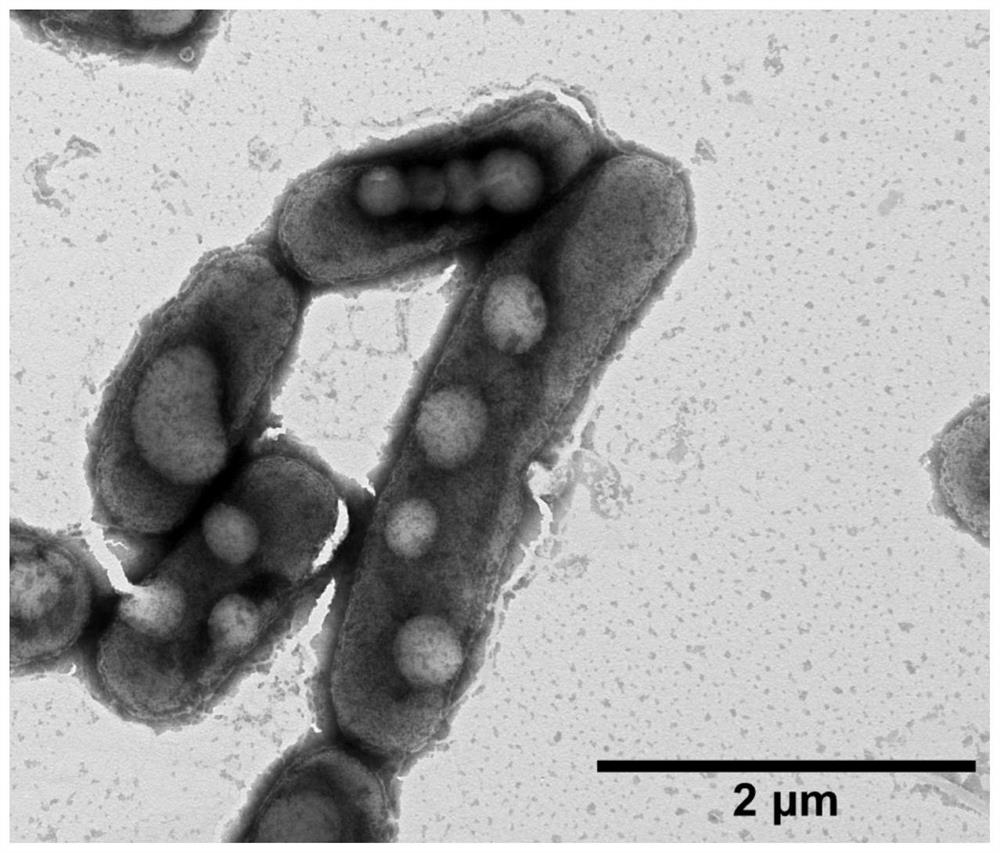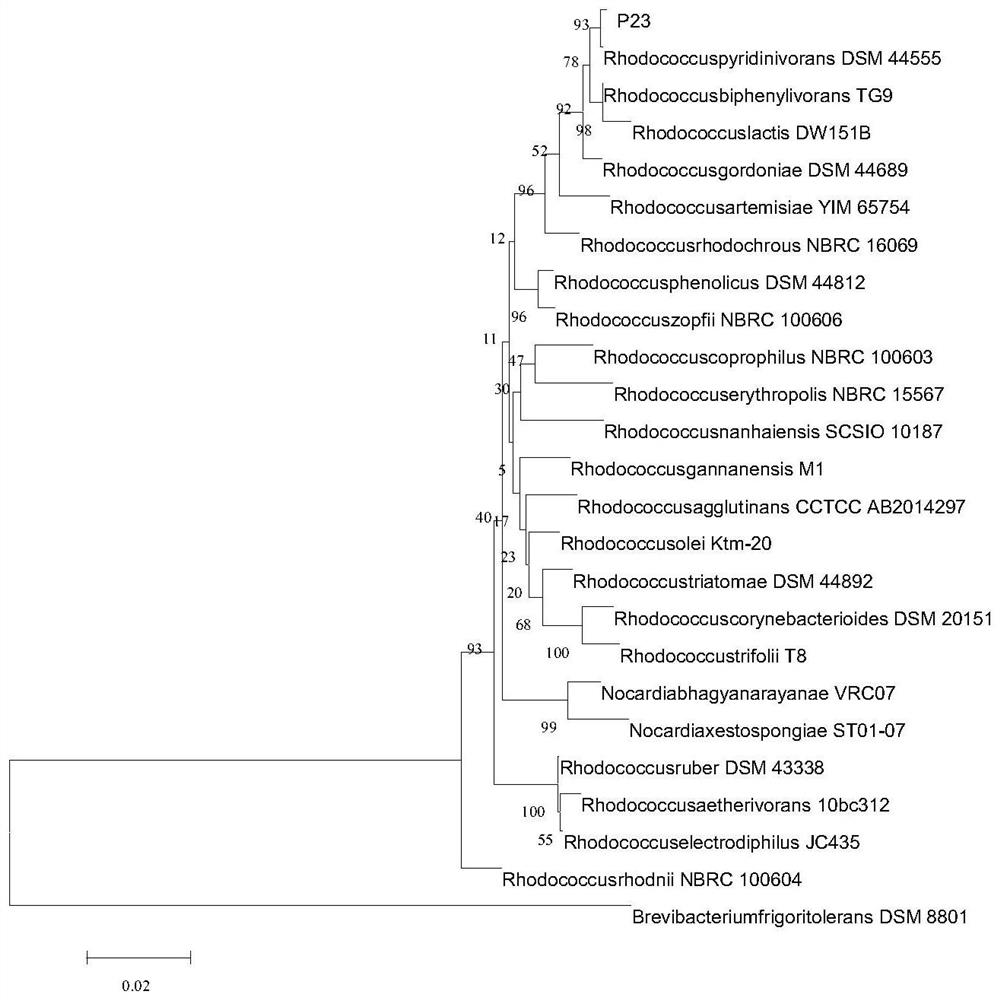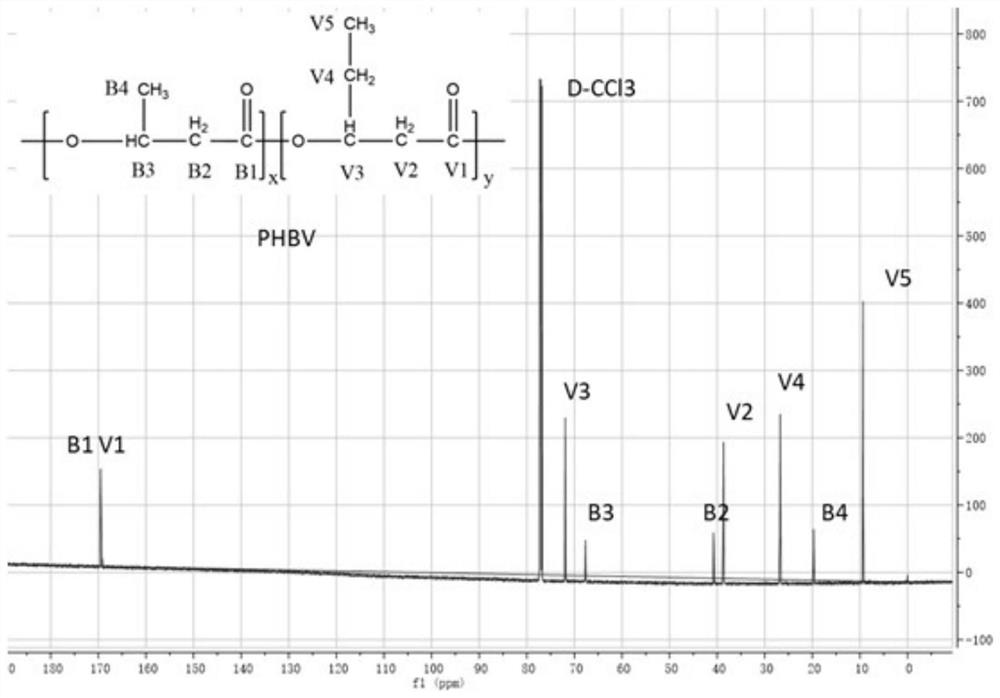Rhodococcus pyridinivorans and application thereof in production of PHBV
A technology of Rhodococcus pyridineophilus and bacterial strains, applied in the field of Rhodococcus pyridinephilus and its application in the production of PHBV, can solve the problems of inadequate recycling, environmental pollution, waste of resources, etc., and achieve good application prospects, physical properties and The effect of excellent thermodynamic performance
- Summary
- Abstract
- Description
- Claims
- Application Information
AI Technical Summary
Problems solved by technology
Method used
Image
Examples
Embodiment 1
[0030] Isolation and identification of strains:
[0031] The obtained Pacific deep-sea sediments were diluted with sterile water and spread on 2216E solid agar plates, and a single colony was picked for streaking and purification to obtain a strain that could produce white particles in the bacteria under a transmission electron microscope and named it P23 . The transmission electron microscope photos of the bacteria strain P23 are as follows: figure 1 As shown, it can be seen that the white particles in the bacteria are PHBV. The genome of the strain was extracted, the whole genome was sequenced, and the 16S rDNA sequence was obtained as shown in SEQ ID NO:1. Comparing the 16S rDNA at https: / / www.ezbiocloud.net / website, it was found that its similarity with the standard strain Rhodococcuspyridinivorans DSM 44555 was 99.93%, indicating that the strain P23 was Rhodococcus pyridinivorans (Rhodococcuspyridinivorans). At the same time, a phylogenetic tree based on the 16S rDNA ...
Embodiment 2
[0034] PHBV was synthesized by fermenting terephthalic acid as a substrate by using Rhodococcus pyridinivorans P23:
[0035] Rhodococcus pyridinivorans P23 was inoculated into 2216E liquid medium for test tube fermentation culture, and the cultured seeds were inoculated into the fermentation medium at 1%. The composition of the fermentation medium is as follows: every liter contains 26.0 g of sodium chloride, 5.0 g of magnesium chloride hexahydrate, 1.06 g of calcium chloride, 4.0 g of sodium sulfate, 0.3 g of ammonium chloride, 0.1 g of potassium dihydrogen phosphate, and 0.1 g of potassium chloride 0.5g, 1ml of trace elements, 10g of terephthalic acid, dilute to 1 liter with water. The pH value was adjusted to 7.0, the culture temperature was 30° C., the rotation speed of the shaker was 180 rpm, and the fermentation time was 48 hours. The fermentation was tested with a 500mL Erlenmeyer flask, and the filling volume was 150mL. After the fermentation, the bacteria were colle...
Embodiment 3
[0037] Characterization of physical properties of PHBV synthesized by fermentation of Rhodococcus pyridinivorans P23:
[0038] Take 10mg of PHBV sample for differential scanning calorimetry analysis, first pre-cool the sample to -100°C, heat it up to 200°C at a speed of 10°C / min and record, quench to -100°C and again at a speed of 10°C / min A temperature rise to 200°C was performed and recorded. The melting temperature of PHBV was found to be 101.0°C and the glass transition temperature was -14.4°C. The PHBV was made into a dumbbell-shaped diaphragm with a thickness of 0.6mm and a length and width of 35×6mm for tensile mechanics experiments. It was found that the tensile strength of PHBV was 1.0Mpa and the elongation at break was 15%. 10 mg of PHBV sample was dissolved in chloroform, and the molecular weight was determined and analyzed by gel permeation chromatography. The weight average molecular weight was 820 kDa.
PUM
| Property | Measurement | Unit |
|---|---|---|
| thickness | aaaaa | aaaaa |
| molecular weight | aaaaa | aaaaa |
| melting point | aaaaa | aaaaa |
Abstract
Description
Claims
Application Information
 Login to View More
Login to View More - R&D
- Intellectual Property
- Life Sciences
- Materials
- Tech Scout
- Unparalleled Data Quality
- Higher Quality Content
- 60% Fewer Hallucinations
Browse by: Latest US Patents, China's latest patents, Technical Efficacy Thesaurus, Application Domain, Technology Topic, Popular Technical Reports.
© 2025 PatSnap. All rights reserved.Legal|Privacy policy|Modern Slavery Act Transparency Statement|Sitemap|About US| Contact US: help@patsnap.com



